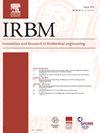虚拟手术计划/3D打印治疗严重粉碎性下颌骨骨折
IF 5.6
4区 医学
Q1 ENGINEERING, BIOMEDICAL
引用次数: 0
摘要
目的严重粉碎性下颌骨骨折由于骨碎片的空间定向丧失,使得精确复位变得困难。传统的方法严重依赖于外科医生的经验,往往导致不理想的结果。虚拟手术计划(VSP)和3D打印已经成为提高复杂颌面病例手术精度和效率的创新工具。本研究旨在评估VSP和3D打印在使用定制手术导板和预弯曲钛板实现严重粉碎性下颌骨折准确复位和固定的效果。材料与方法选取5例重度粉碎性下颌骨骨折患者。术前计算机断层扫描(CT)数据被导入MIMICS软件,用于VSP,在该软件中,骨折碎片几乎对齐。使用3-Matic软件和3D打印技术设计了短段钻井导向器(ssdg)和马蹄形减速导向器(HSRG)。术中,ssdg用于钻螺钉孔,HSRG与预弯曲钛板一起,有助于精确复位和固定骨碎片。通过3D CT扫描评估术后结果,并比较术前VSP和术后数据的下颌参数。结果5例患者术后3个月均复位成功,下颌轮廓和咬合关系良好。术前VSP与术后测量的下颌参数(CoD、gold - gor、ΔGo-Me、∠gold - me - gor、Δ Co-Go-Me)差异无统计学意义(p >;0.05)。每位患者平均骨折片数8.8片,平均手术时间169分钟。结论svsp联合3D打印为治疗严重粉碎性下颌骨骨折提供了一种可靠、精确的方法。该方法降低了手术的复杂性,提高了准确性,并提供了良好的功能和美观的结果,使其成为复杂下颌骨骨折治疗的宝贵工具。本文章由计算机程序翻译,如有差异,请以英文原文为准。

Virtual Surgical Planning/3D Printing for the Management of Severely Comminuted Mandibular Fractures
Objectives
Severely comminuted mandibular fractures present significant challenges due to the loss of spatial orientation of bone fragments, making precise reduction difficult. Traditional methods rely heavily on the surgeon's experience, often leading to suboptimal outcomes. Virtual surgical planning (VSP) and 3D printing have emerged as innovative tools to enhance surgical precision and efficiency in complex maxillofacial cases. This study aimed to evaluate the efficacy of VSP and 3D printing in achieving accurate reduction and fixation of severely comminuted mandibular fractures, using customized surgical guides and pre-bent titanium plates.
Material and Methods
Five patients with severely comminuted mandibular fractures were included. Preoperative computed tomography (CT) data were imported into MIMICS software for VSP, where fracture fragments were virtually aligned. Short-segment drilling guides (SSDGs) and a horseshoe-shaped reduction guide (HSRG) were designed using 3-Matic software and 3D printed. Intraoperatively, SSDGs were used to drill screw holes, and HSRG, along with pre-bent titanium plates, facilitated precise reduction and fixation of bone fragments. Postoperative outcomes were assessed using 3D CT scans, and mandibular parameters were compared between preoperative VSP and postoperative data.
Results
All five patients achieved successful reduction with satisfactory mandibular contour and occlusal relationships at three months postoperatively. There were no significant differences in mandibular parameters (CoD, GoL-GoR, ΔGo-Me, ∠GoL-Me-GoR, and Δ∠Co-Go-Me) between preoperative VSP and postoperative measurements (p > 0.05). The average number of fracture fragments per patient was 8.8, with an average operation time of 169 minutes.
Conclusions
VSP combined with 3D printing offers a reliable and precise method for managing severely comminuted mandibular fractures. This approach reduces surgical complexity, enhances accuracy, and provides excellent functional and aesthetic outcomes, making it a valuable tool for complex mandibular fracture management.
求助全文
通过发布文献求助,成功后即可免费获取论文全文。
去求助
来源期刊

Irbm
ENGINEERING, BIOMEDICAL-
CiteScore
10.30
自引率
4.20%
发文量
81
审稿时长
57 days
期刊介绍:
IRBM is the journal of the AGBM (Alliance for engineering in Biology an Medicine / Alliance pour le génie biologique et médical) and the SFGBM (BioMedical Engineering French Society / Société française de génie biologique médical) and the AFIB (French Association of Biomedical Engineers / Association française des ingénieurs biomédicaux).
As a vehicle of information and knowledge in the field of biomedical technologies, IRBM is devoted to fundamental as well as clinical research. Biomedical engineering and use of new technologies are the cornerstones of IRBM, providing authors and users with the latest information. Its six issues per year propose reviews (state-of-the-art and current knowledge), original articles directed at fundamental research and articles focusing on biomedical engineering. All articles are submitted to peer reviewers acting as guarantors for IRBM''s scientific and medical content. The field covered by IRBM includes all the discipline of Biomedical engineering. Thereby, the type of papers published include those that cover the technological and methodological development in:
-Physiological and Biological Signal processing (EEG, MEG, ECG…)-
Medical Image processing-
Biomechanics-
Biomaterials-
Medical Physics-
Biophysics-
Physiological and Biological Sensors-
Information technologies in healthcare-
Disability research-
Computational physiology-
…
 求助内容:
求助内容: 应助结果提醒方式:
应助结果提醒方式:


